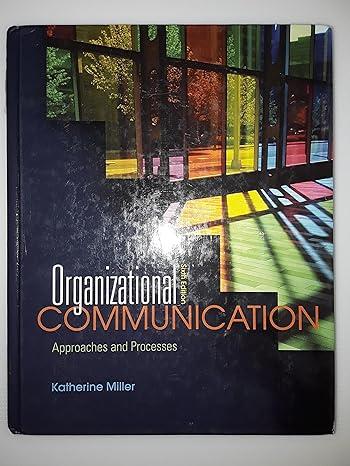Marshalls is a large plant in the midwestern United States that processes corn into the fructose syrup
Question:
Marshall’s is a large plant in the midwestern United States that processes corn into the fructose syrup used in many soft drinks. Marshall’s is a continuous processing plant, running 24 hours a day, 365 days a year. There are two major components of the plant. In the wet mill, where seventy-five employees work, the corn is soaked. Then, the soaked corn moves on to the refinery (employing eighty employees), where the soggycorn is processed into fructose syrup. Marshall’s is a computerized state-of-the-art plant, and much of the work in the wet mill and refinery consists of monitoring, maintenance, cleanup, and troubleshooting. There are also thirty staff members who work in the office and in various other support positions. All the employees except the support staff work twelve-hour shifts. Three years ago, Marshall’s instituted a “team management” system to enhance productivity in the plant and improve worker morale. The program included two types of teams. First, work teams met on a weekly basis to consider ways of improving the work process within their own portion of the plant. In addition, the plant-wide “Marshall Team” met on a monthly basis to consider decisions about issues facing the plant as a whole, such as benefit and compensation plans, company policies, and capital equipment purchases. Each work team elected one member to serve on the Marshall Team. Management at Marshall’s regarded the teams as “consultative” bodies. That is, management used team suggestions as input but retained the right to make final decisions about all plant operations. For the first three years of the team program, the same set of people participated heavily in team meetings and the same people tended to get elected to the Marshall Team. These go-getters took their roles very seriously and liked having a voice in company decisions. However, management at Marshall’s was becoming concerned about the people who did not participate in the team program. After evaluating the problem for a while, management decided that it was a complicated issue and that there were three kinds of employees who were not participating in the team program.
CASE ANALYSIS QUESTIONS
1. Do the original goals of the team management system used at Marshall’s comport more with the philosophy of human relations or human resources management? How would the theorists discussed in this chapter (Maslow, McGregor, Likert, and Blake and Mouton) analyze the current situation at Marshall’s?
2. Employees identified three reasons for not participating in the program at Marshall’s. How would you deal with each of these problems? Is it possible (or desirable) to satisfy all groups of employees and achieve full participation? Would human relations and human resources theorists have different ideas about the importance of these various reasons for not participating in the team management system?
3. What changes would you make in the team management system at Marshall’s that would increase participation? What changes would you make to enhance the effective use of human resources at Marshall’s? How would you institute these changes and communicate them to employees?
Step by Step Answer:

Organizational Communication Approaches And Processes
ISBN: 9780495898320
6th Edition
Authors: Katherine Miller





